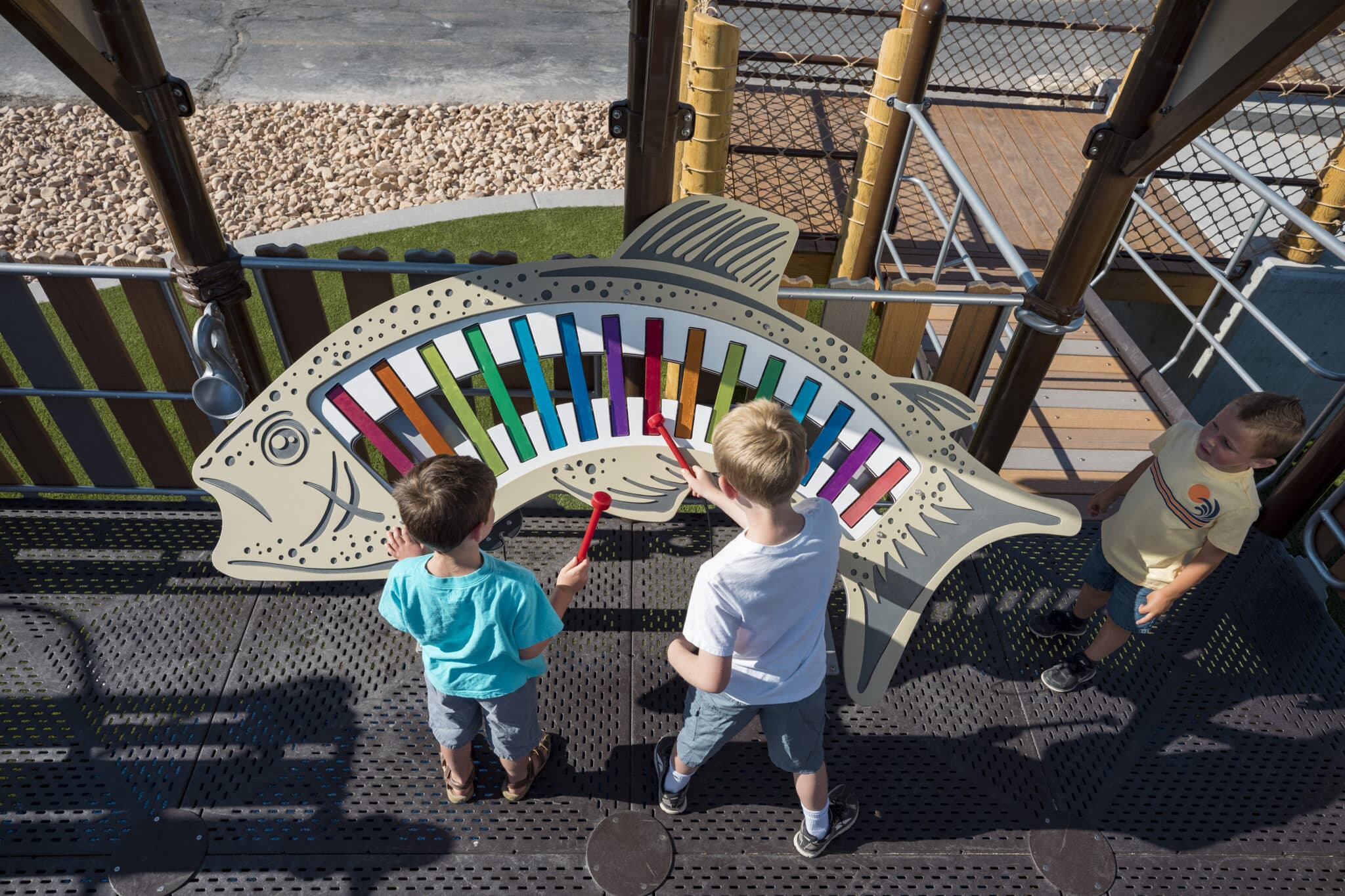Sensory experiences are an essential part of childhood development. Engaging in sensory play activities helps children build crucial cognitive, physical, social, and emotional skills.
Sensory playground equipment is designed to stimulate and engage the senses including hearing, sight, and touch. Playgrounds rich in various textures, sounds, and visual experiences help children develop their sensory processing abilities, enhancing their perception and understanding of the world around them. Different types of sensory playground elements allow children to explore their environment and find experiences they enjoy best.
Sensory play elements are also an essential part of inclusive play spaces. Sensory play equipment allows children who have limitations when it comes to physical play to enjoy the playground. Exposure to sensory input and experiences also benefits children with sensory processing disorders.
When designing a playground with sensory play in mind, consider elements and equipment that provide the following experiences:
Tactile:
Including a variety of textures and materials on the playground provides a rich and engaging play experience, and helps children develop fine motor skills.
Consider textures including:

The Roller Slither Slide offers a full body tactile experience with aluminum rollers.
Smooth: Metal slides, mirrors
Soft: Grass, rubber components
Hard: Rocks, plastic play equipment
Rough: Boulders or rocks, rope
Grainy: Sand, dirt, rocks, boulders
Uneven: Slide with built-in bumps
Loose or liquid materials like sand and water
Auditory:
Musical instruments and other sound based elements encourage rhythm, movement, creativity, fine motor skills, and social interaction.
The Music Center includes drums, bells, chimes, and horns to build auditory awareness, promote creativity, and encourage group play

Freestanding musical instruments can also be placed at ground-level along paths, making them more accessible for children with different reach ranges and people who use mobility devices.
Visual:
A variety of visual elements including colors, shapes, and textures create a unique and exciting playground. Play panels can address the visual system, such as tracing, tracking, memory, and matching games.

The Scavenger Hunt Panel lets children explore to find icons throughout the playground.
Natural Elements:
Interacting with nature has a wide range of benefits, including enriching cognitive and creative skills. Natural features such as trees, grasses, bark, soil, sand, water, and rocks provide exposure to different sensory experiences.
Cozy Places:
It is important to provide a place on the playground where a child can retreat to relax when experiencing sensory or cognitive overload.

The Cozy Cocoon is designed to be a cozy space for children to escape when feeling overstimulated. The windows allow a child to feel enclosed while still having adult supervision, and the spinning motion and interior tactile experiences help with relaxing.
Vestibular System:
The vestibular system, located in the inner ear, provides a sense of balance, coordination, and spatial orientation. Children’s vestibular systems develop through activities such as swinging, hanging, spinning jumping, rolling
Spinning stimulates the vestibular system, improving spatial awareness, balance, muscle control, and gross motor skills.
Proprioceptive System:
Proprioception refers to the sense of relative position and movement of the limbs and body. Proprioceptive development is driven by movement, so activities such as pushing, pulling, jumping, and climbing help children develop spatial awareness of their body.

Climbing, crawling, and strengthening address the proprioceptive system by providing activities that allow for the contraction and stretching of muscles as well as bending, straightening, pulling, and compression of the body’s joints.
Sensory play is a valuable tool for childhood development, as it provides a multitude of benefits that promote their overall growth. Along with promoting the development of sensory processing abilities, sensory play offers opportunities for social interaction, language development, and cooperation. Sensory playground elements create a more inclusive environment for all and allow children to learn and grow by exploring the world around them.







